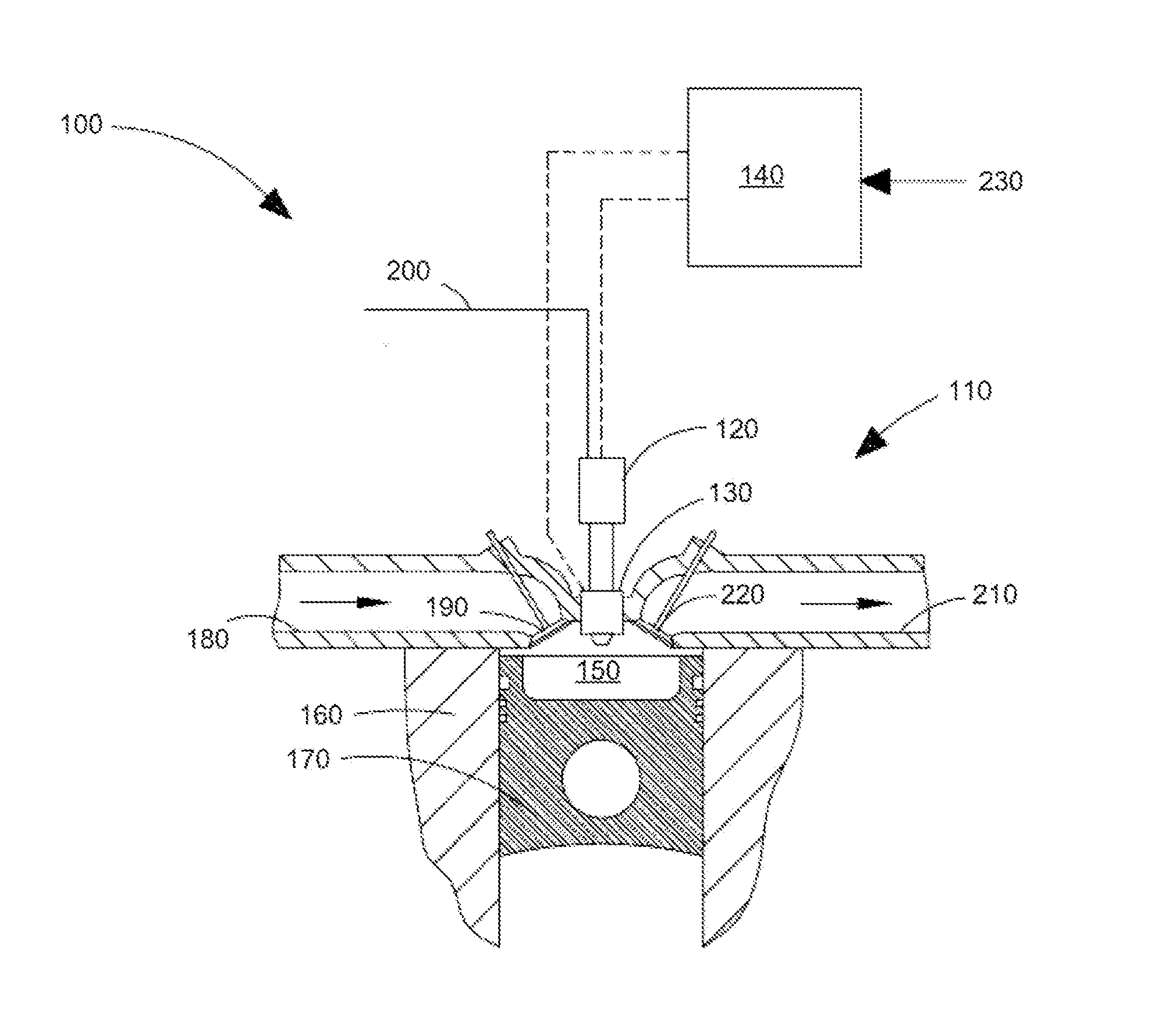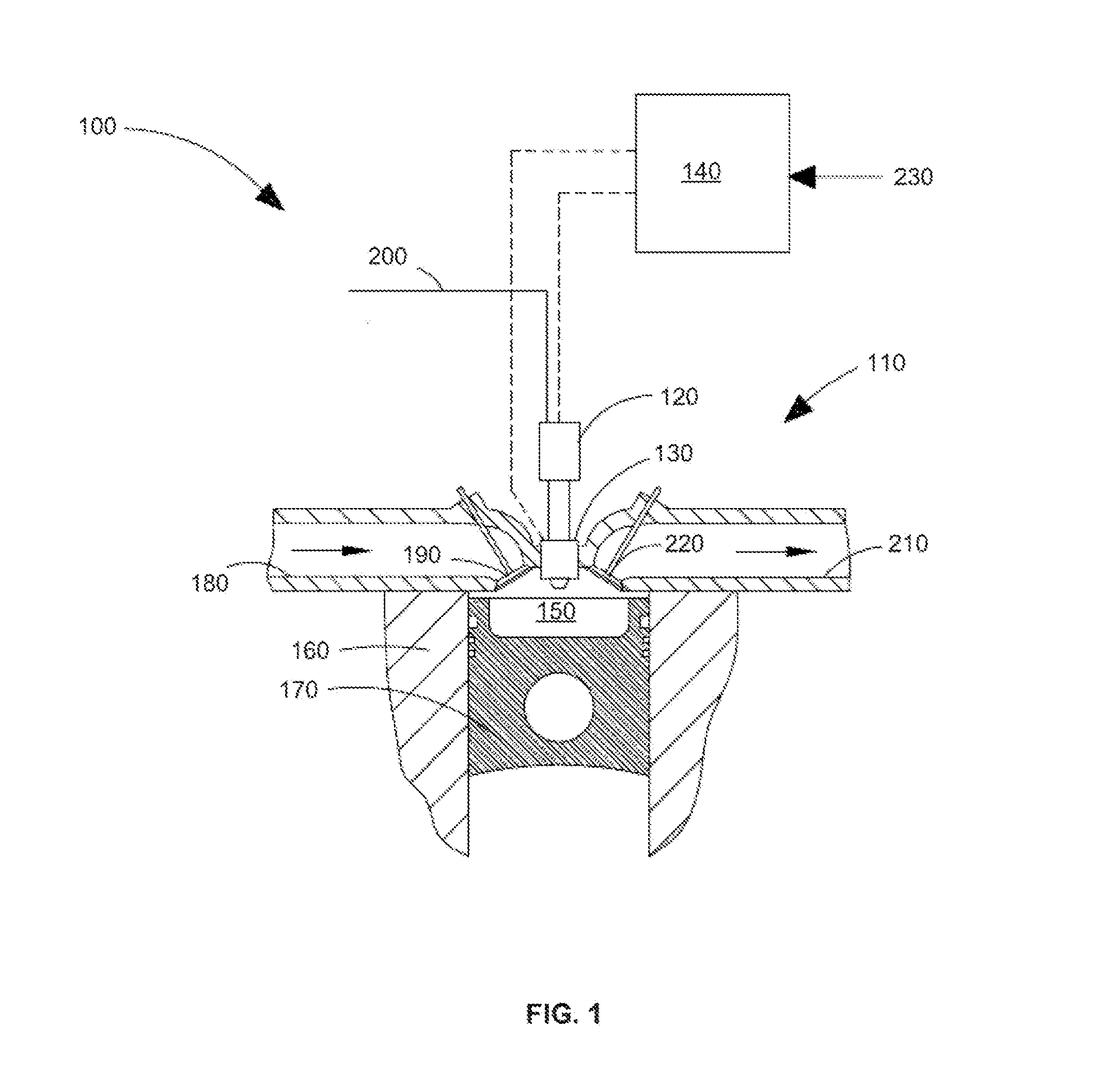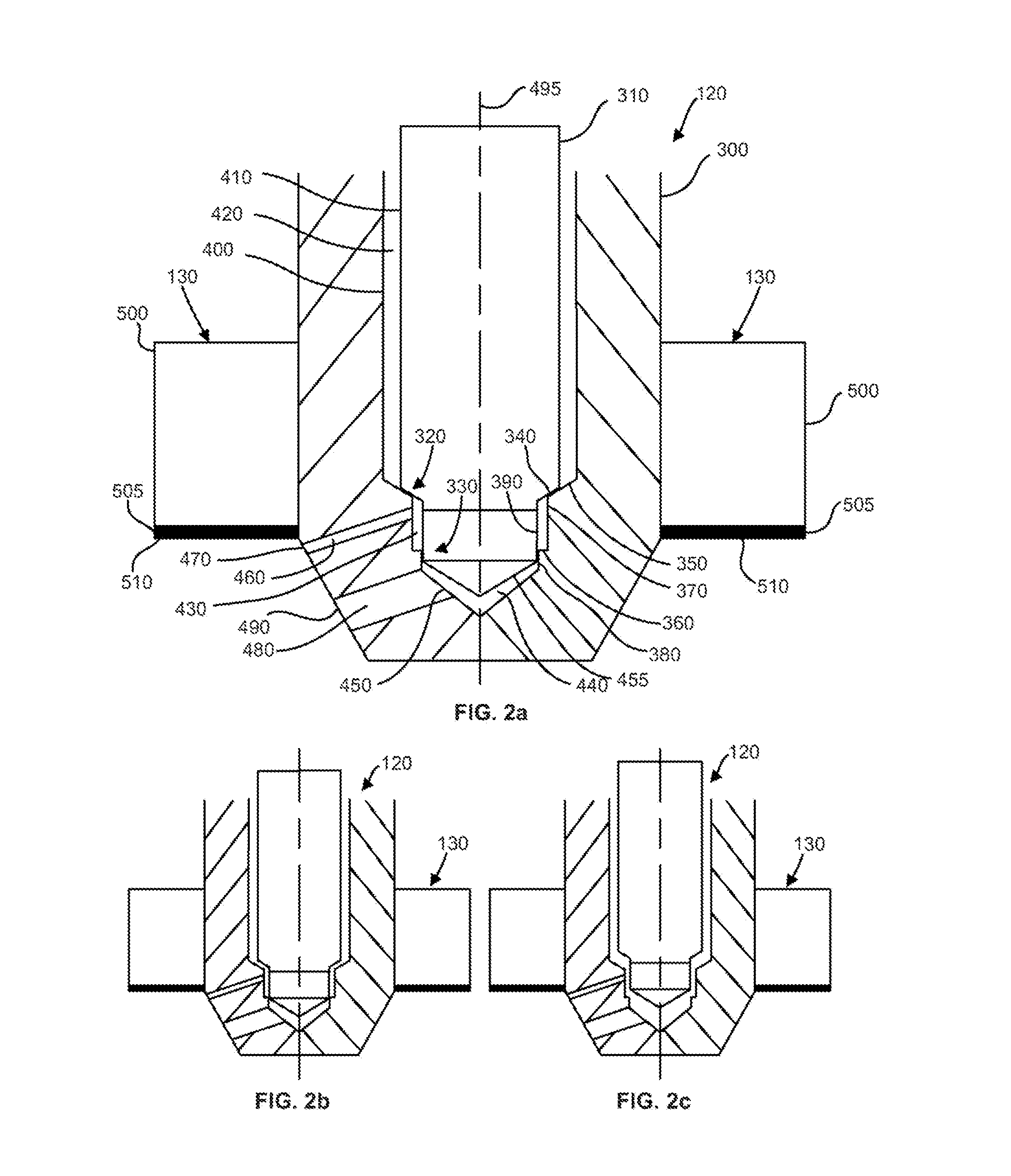Apparatus And Method For Igniting A Gaseous Fuel In A Direct Injection Internal Combustion Engine
- Summary
- Abstract
- Description
- Claims
- Application Information
AI Technical Summary
Benefits of technology
Problems solved by technology
Method used
Image
Examples
second embodiment
[0086]Referring now to the schematic view of FIG. 6, there is shown a second embodiment which is similar to the previous embodiment and like parts have like reference numerals and are not described in detail, if at all. Ignition source 130 includes diverting and retaining member 540 that extends partially around an outer periphery of ignition source 130 on either side of orifice 470. When valve body 300 comprises multiple pilot injection orifices 470, then each such orifice 470 has a respective diverting and retaining member 540. During injection of the pilot fuel through passageway 460, pilot jet 520 impacts diverting member 540 which diverts the flow around the perimeter of valve body 300 in both directions increasing residence time by retaining pilot fuel near heated surface 510. The impact causes turbulence in jet 520 which improves mixing of pilot fuel without it becoming overly lean. Since residence time is increased by member 540, the pilot fuel has more time to heat to its a...
third embodiment
[0087]Referring now to the schematic view of FIG. 7, there is shown a third embodiment which is similar to the previous embodiments and like parts have like reference numerals and are not described in detail, if at all. Sparking mechanism 545 ignites gaseous fuel by spark ignition and comprises spark ring 550 and source electrodes 560. Spark ring 550 is a ground electrode and extends around a perimeter of valve body 300 and is secured to ignition source by post 570. Source electrodes 560 are spaced along the path of ring 550 and are a source of electrical energy for which ring 550 is a return path to ground for sparks that occur when a sufficient voltage differential exists between electrodes 560 and ring 550. In a preferred embodiment there is at least one electrode between respective pairs of pilot injection orifices 470 around valve body 300, for which only one such passageway is shown in FIG. 7, although this is not a requirement. During injection of the pilot fuel through passa...
fourth embodiment
[0089]Referring now to the schematic view of FIGS. 9a, b and c, there is shown a fourth embodiment which is similar to the previous embodiments and like parts have like reference numerals and are not described in detail, if at all. Fuel injector 120 is an outward opening injector in this example, which is advantageous when the fuel injection pressure of the gaseous fuel is low. Injector 120 is in the closed position in FIG. 9a where both valves 320 and 330 are closed, the first open position in FIG. 9b where valve 320 is open and valve 330 is closed, and the second open position in FIG. 9c where both valves 320 and 330 are open. Valve 330 is a pintle-type valve which forms an annular main injection passageway 480 between valve closure member 600 at the end of needle 310 and body 300. The main fuel jet that emerges from passageway 480 is in the form of a conical sheet. When the conical sheet is not stable it requires ventilation to equalize pressure above and below the sheet. Diverti...
PUM
 Login to View More
Login to View More Abstract
Description
Claims
Application Information
 Login to View More
Login to View More - R&D
- Intellectual Property
- Life Sciences
- Materials
- Tech Scout
- Unparalleled Data Quality
- Higher Quality Content
- 60% Fewer Hallucinations
Browse by: Latest US Patents, China's latest patents, Technical Efficacy Thesaurus, Application Domain, Technology Topic, Popular Technical Reports.
© 2025 PatSnap. All rights reserved.Legal|Privacy policy|Modern Slavery Act Transparency Statement|Sitemap|About US| Contact US: help@patsnap.com



